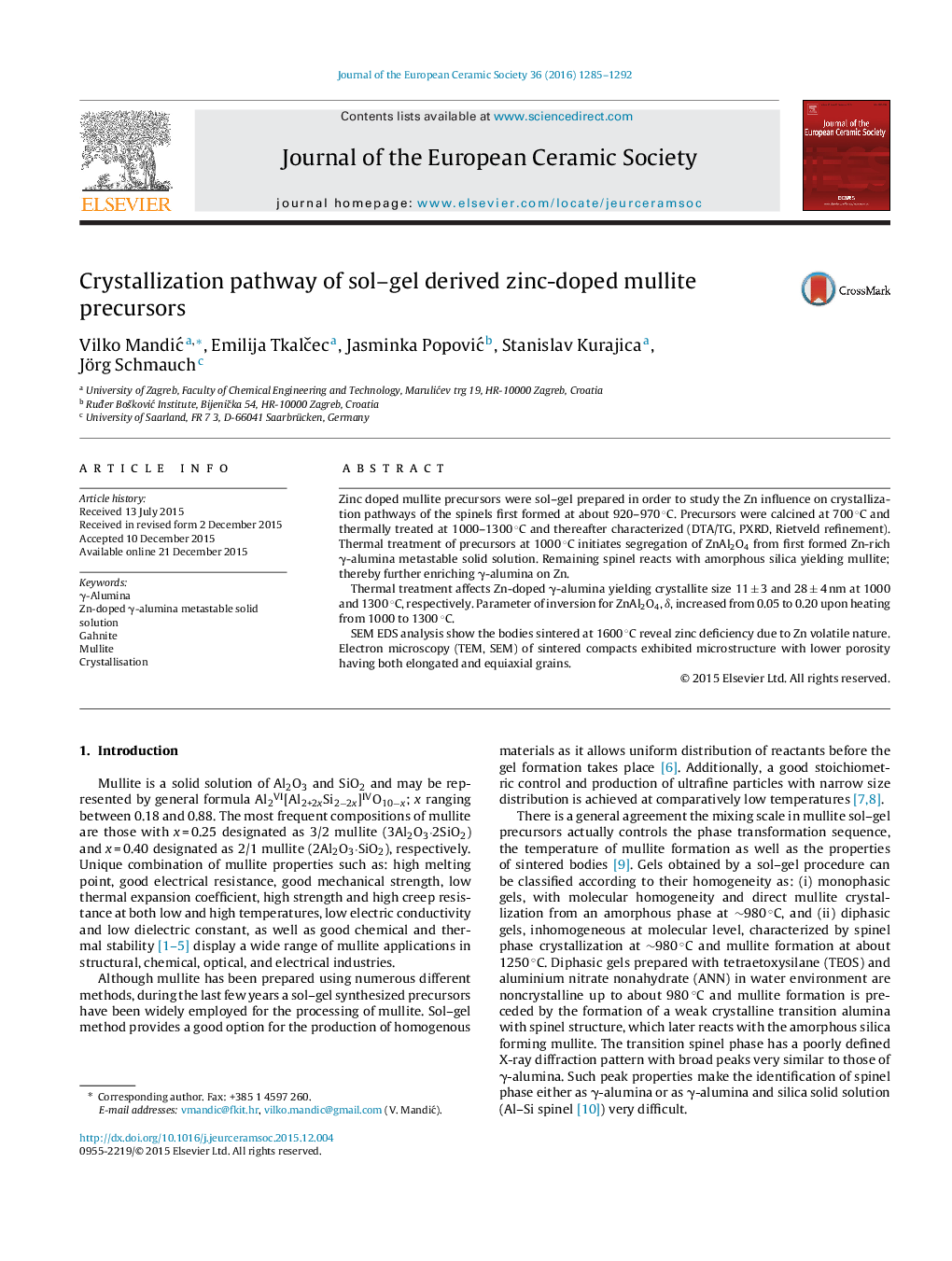| Article ID | Journal | Published Year | Pages | File Type |
|---|---|---|---|---|
| 1473768 | Journal of the European Ceramic Society | 2016 | 8 Pages |
Zinc doped mullite precursors were sol–gel prepared in order to study the Zn influence on crystallization pathways of the spinels first formed at about 920–970 °C. Precursors were calcined at 700 °C and thermally treated at 1000–1300 °C and thereafter characterized (DTA/TG, PXRD, Rietveld refinement). Thermal treatment of precursors at 1000 °C initiates segregation of ZnAl2O4 from first formed Zn-rich γ-alumina metastable solid solution. Remaining spinel reacts with amorphous silica yielding mullite; thereby further enriching γ-alumina on Zn.Thermal treatment affects Zn-doped γ-alumina yielding crystallite size 11 ± 3 and 28 ± 4 nm at 1000 and 1300 °C, respectively. Parameter of inversion for ZnAl2O4, δ, increased from 0.05 to 0.20 upon heating from 1000 to 1300 °C.SEM EDS analysis show the bodies sintered at 1600 °C reveal zinc deficiency due to Zn volatile nature. Electron microscopy (TEM, SEM) of sintered compacts exhibited microstructure with lower porosity having both elongated and equiaxial grains.
